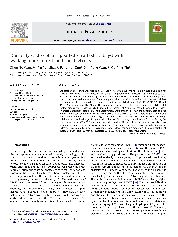摘要
Life tests of direct methanol fuel cells (DMFCs) were carried out with three individual single cells for three different times. X-ray diffraction (XRD) and X-ray photoelectron spectra (XPS) were used to evaluate the cathodic Pt black catalysts prior to and after the life tests. XRD results showed that the particle sizes of cathodic catalysts increased from an original value of 7.3-8.3, 8.7, and 9.2 nm, whereas their lattice parameters first increased and then decreased from an original value of 3.9188-3.9210, 3.9197, and 3.9196 angstrom before and after 117,210,and 312 working hours, respectively. XPS results indicated that the metal content gradually decreased with test time, but the contents of Pt oxides in cathodic catalysts increased. Hydrogen adsorption-desorption cyclic voltammetry were employed to test the performances of three individual fuel cells and the electrochemically active surface areas (S(EAS)) of cathodic catalysts before and after the life tests. It is found that both S(EAS) of cathodic catalysts and their utilization decreased markedly. This indicates that the change of S(EAS) and utilization of cathodic catalysts are the main factors affecting the performance decay of DMFC. The dissolution/agglomeration of Pt metal from cathodic catalysts also plays an important role in the performance decay of DMFC. The sintering/degradations of cathodic Pt nanoparticles were accelerated due to crossover of methanol to form the mixed potentials. The agglomeration of cathodic Pt nanoparticles may be illustrated with dissolution/deposition mechanism.
- 出版日期2008-12-1
- 单位哈尔滨工业大学
